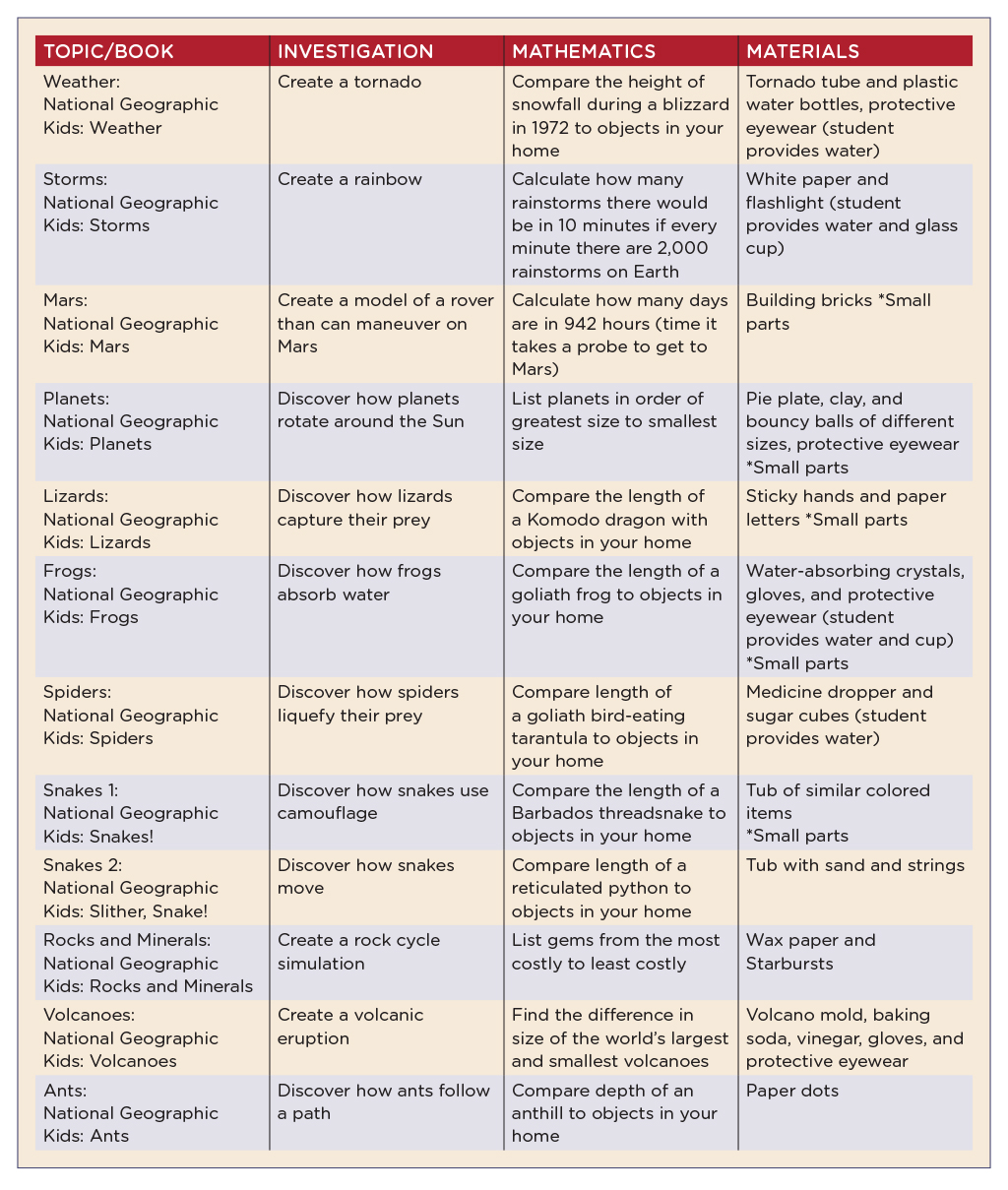Reading Adventures
Building scientists one page at a time
These second- and third-grade students began the school year with 83% testing below reading proficiency. On surveys given at the beginning of the year, parents/guardians stated reading was the biggest concern for their child, and students stated they enjoyed hands-on activities, especially during science. To increase comprehension and fluency, a combination of reading and engagement was the key. To capture the same passion and excitement students showed while engaging in science investigations and experiments in the classroom, the Reading Adventures program was created. Each take-home bag contains a nonfiction book along with a simple scientific investigation and math problem related to the book’s topic (see Supplemental Resources for an overview of the activities). The goal for the program was to increase student reading scores by including families in the learning process. After all, research on the best practices in education “suggests that parental involvement, not income or social status, is the most accurate predictor of scholastic achievement” (Learning Liftoff 2015).
Planning the Program
After considering cost, time for bag preparation, and students’ interests, a biweekly program was chosen to allow a week to replenish the bags and grade worksheets using the included rubric. The Reading Adventures bags are given to students on a Wednesday and due back in one week. This allows for families to have ample time to work together on the activities, often completing one part of the assignment a night. Also, this extra time allows for students who are absent to return their bags before the next cycle. The rubrics are included in the bags for families to view during activities but are completed by the teacher. When students return the bags, they can take an Accelerated Reader Test to check for reading comprehension. Accelerated Reader is a program our school purchased in order for students to set goals for reading and then take online comprehension tests based upon books they read to reach their goals. The tests range in number of questions based upon the book’s reading level. The worksheets students complete are checked for completion and understanding. Sometimes, answers require a discussion with the teacher in order to further gauge student understanding of the topic and to clear up any misconceptions the student may have. Students receive grades for science, math, and reading with a possibility of two points per question.
Most of the materials chosen for the Reading Adventures bags include items that are reusable, such as building blocks for a “Mars Rover” with additional items that can be easily (and cheaply) purchased, including flour for the meteor investigations and chocolate chip cookies for the paleontology investigation. To begin the program, bags were purchased for $30, nonfiction books for $50 (I chose to purchase National Geographic Kids packs from Scholastic as these books cover a variety of topics we study in second and third grades, and the prices were reasonable), and additional materials for the investigations were $50. To help offset costs, consider writing a grant, creating a project on DonorsChoose, or reaching out to your school’s PTO/PTA.
To differentiate the bags, we work closely with parents/caregivers to choose investigations students can complete. This can be done by providing a list of bag topics with the investigation instructions as well as using nonfiction books/articles on the student’s Lexile level (or websites for viewing). Another aspect to consider is a student’s level of support at home. Because some students do not have a home environment that is supportive for an investigation project, consider working with that student during school hours to complete his/her investigation, such as before school or during a lunch bunch time.
To deepen students’ curiosities, try including a list of websites related to STEM careers on the various topics. For enrichment, include additional websites that families can use to investigate more about the topic related to their investigation.
Make families aware of any possible safety hazards associated with the investigations. Hazards can include small parts that pose a choking hazard; anything posing risk to eyes; and allergy concerns. Provide any safety equipment needed, such as protective eyewear, masks, and/or gloves along with safety instructions for before, during, and after the investigation. For items that should not be ingested or inhaled, write an informational warning on the bag containing the contents.
Sally’s Dinosaur Adventures
Let’s take a look at a Reading Adventures week for one student. On Wednesday, Sally received the Dinosaurs Reading Adventures Bag. Together, we reviewed the contents of the bag and discussed how to use the materials for the investigation, including when to wear the safety goggles. I complete this process during our group work time in which students are working on an online math program, STEM bins, or teacher time. During teacher time, I review each student’s bag in my group. This takes approximately three to five minutes per student.
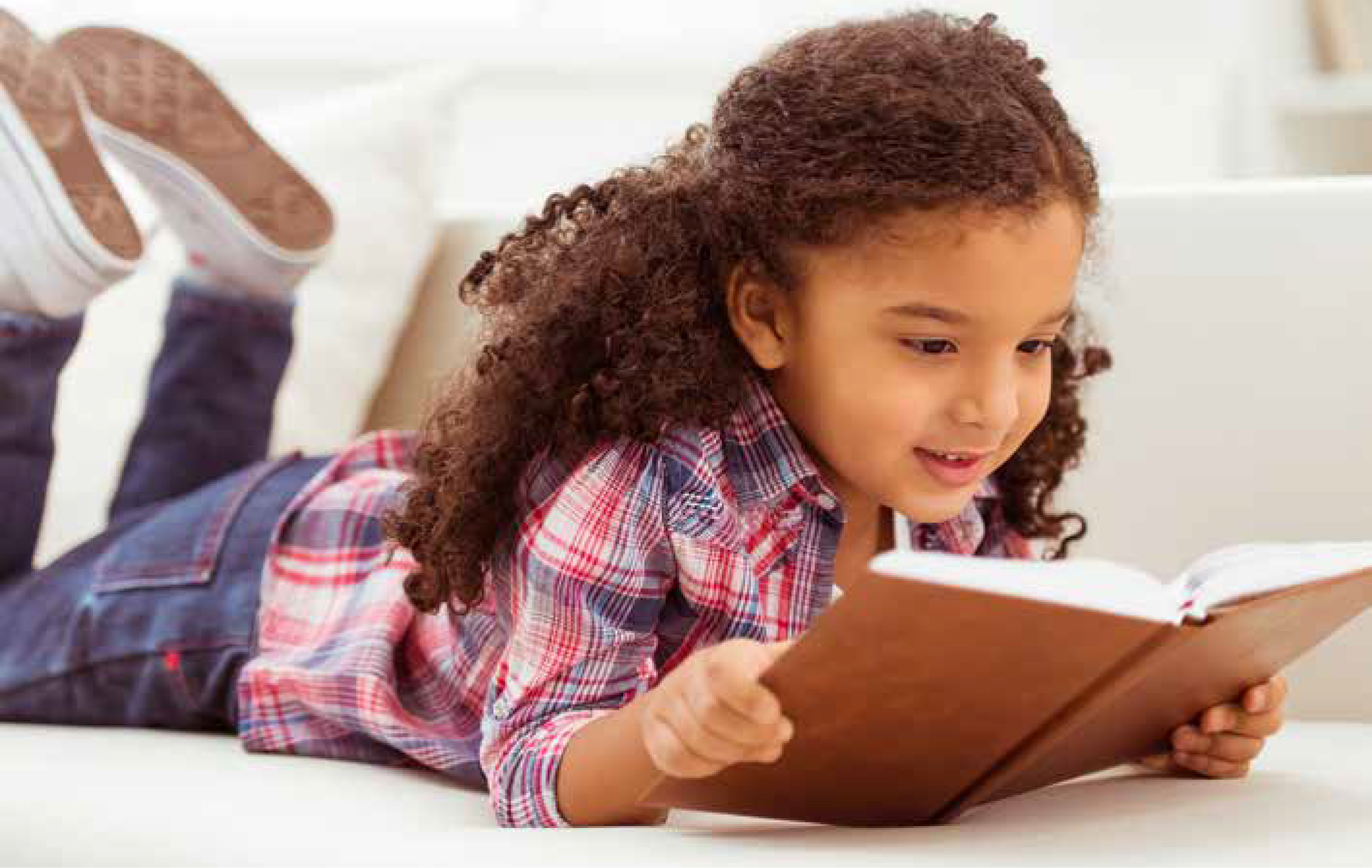
Sally took the bag home and on the first night, she read the text to her mom. The book chosen for her was National Geographic Kids Dinosaurs. This book is a Level 1 reader in which students learn basic facts about dinosaurs including what they ate, smallest and largest dinosaurs, paleontology, and fossils. The next evening, they reviewed the text together and then completed the reading comprehension worksheet (Figure 1). Over the weekend, Sally and her mother completed the scientific investigation by becoming paleontologists as they used toothpicks to uncover buried chocolate chips in the cookies. On Monday, Sally completed the science and math worksheet questions. The science portion of the worksheet asks the student to compare how the activity of digging for chocolate chips with that of a paleontologist’s job (Figure 2, p. 34). Students are also asked to describe any challenges involved with this investigation. Because measurement and comparing sizes of objects is a mathematics standard for second and third-grades, the math portion of the worksheet asks the student to use a string the size of a T. Rex tooth and compare it to objects found in the student’s home. This activity shows the student’s understanding of being able to compare sizes accurately. I use the information for possible reteach opportunities if needed as well as extension activities, such as comparing and contrasting objects within our room. “My favorite parts of the investigation were when I got to read the book. I might want to be a paleontologist when I grow up because it sounds like a really fun job. When we investigated, it was really hard to get the chocolate chips out without breaking the cookie or the chips, but on the second try I got it right! I definitely think I would make a great paleontologist!” Sally shared her adventure by placing photographs on the class website.
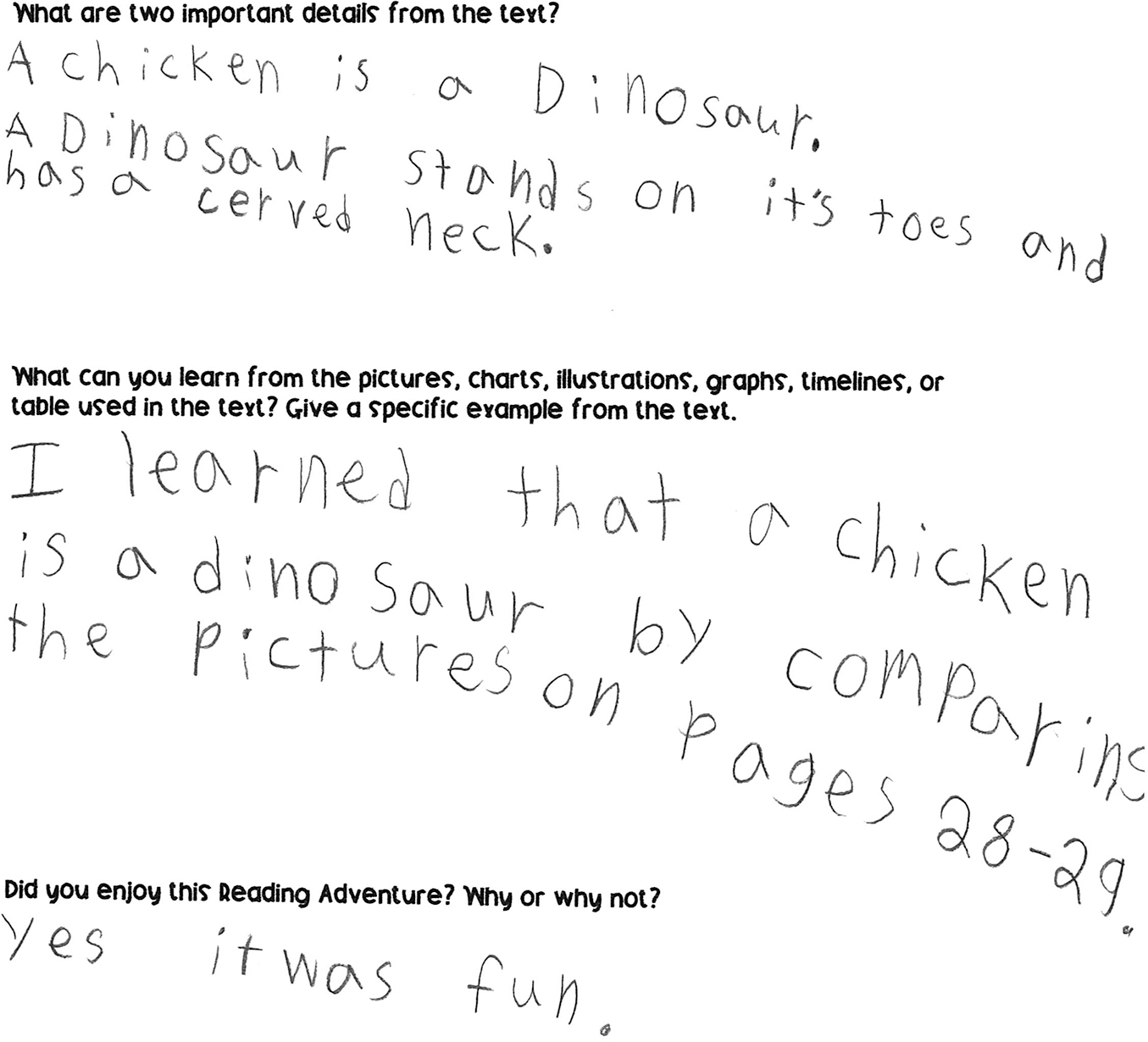
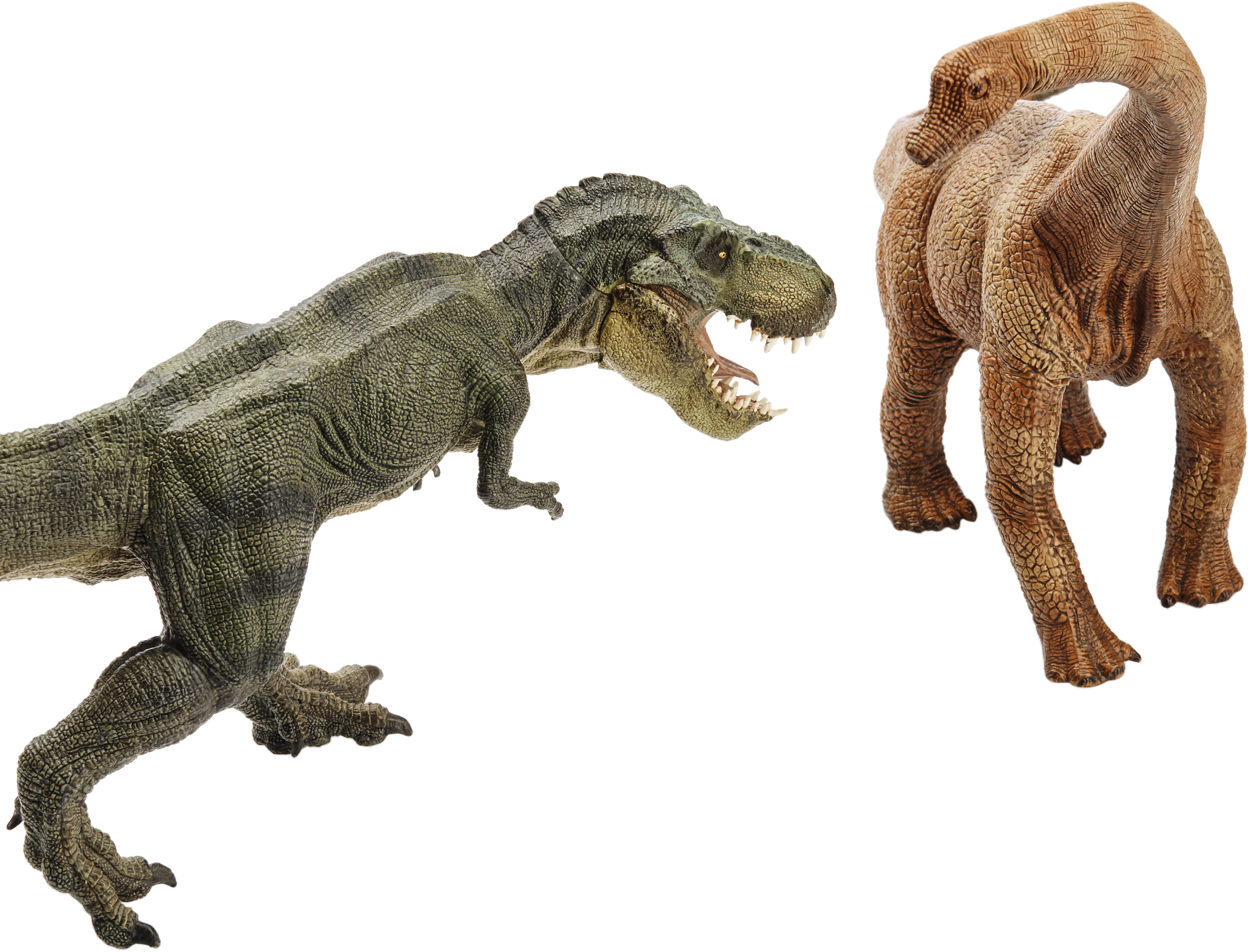
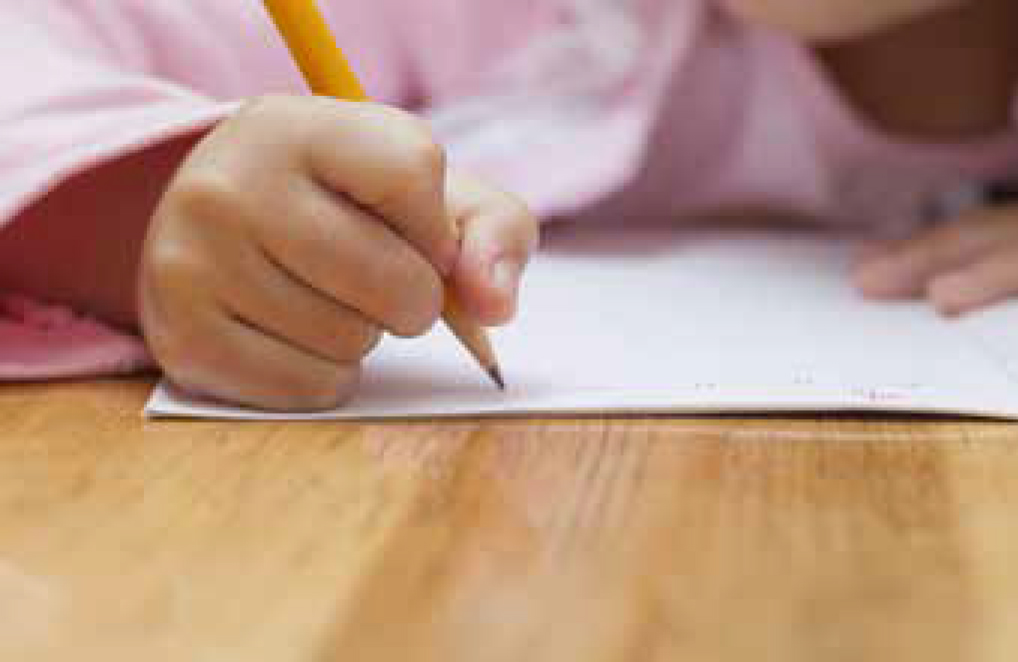
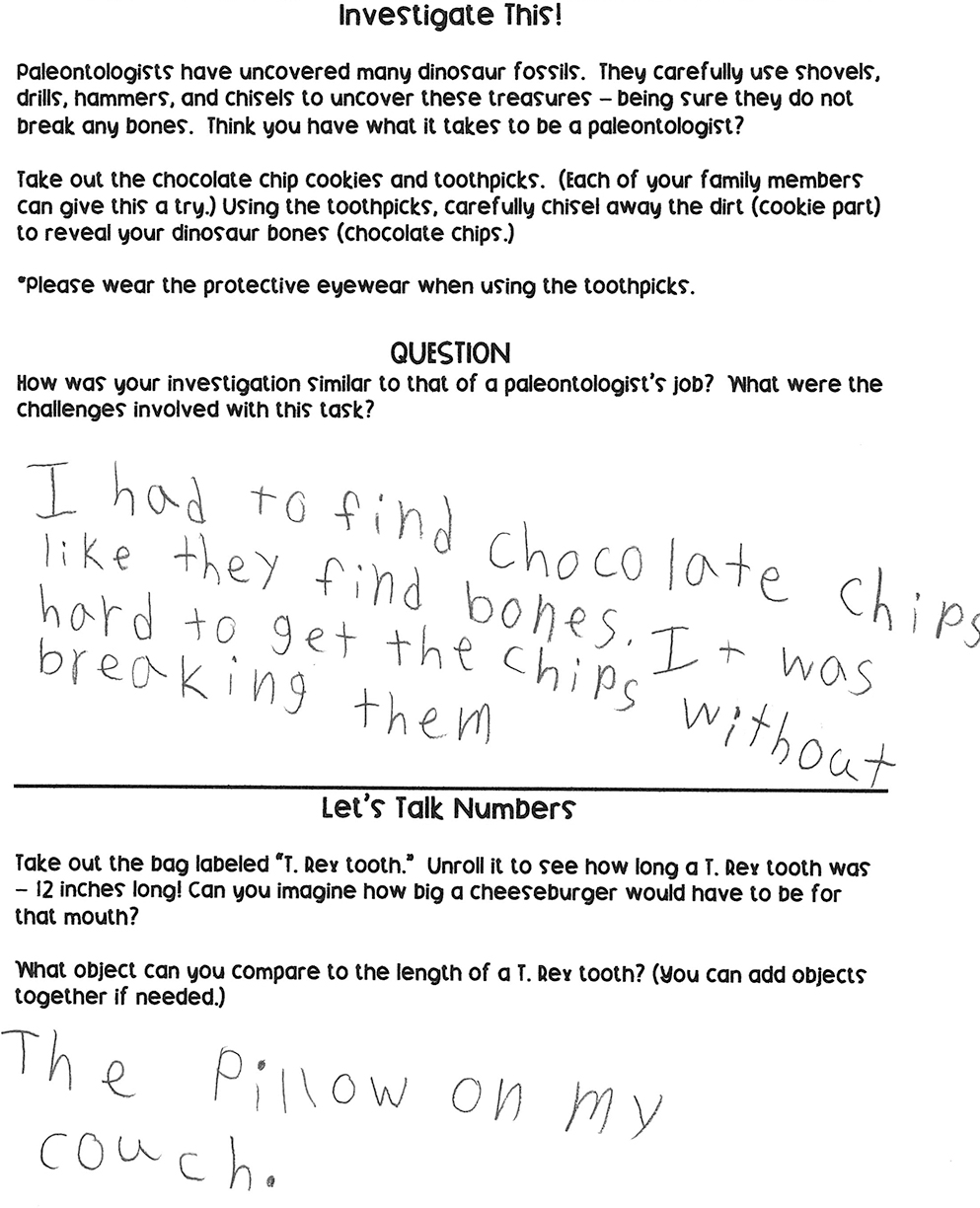
Conclusion
The response to the program has been overwhelming. “Can we take two at a time?” students often ask. Throughout the year, students have made at least a gain of 0.4 in reading proficiency according to the Renaissance Reading Assessment within a grading period, but what is most important is the change in mindset that being observed. Students are constantly asking each other, “Why do you think…” and then working together, whether through research or investigations, to find their answers. There has also been a significant improvement in parent/caregiver involvement including greater communication with the teacher via the class website, such as asking for more tools/ideas to help further their child’s education as well as parents/guardians wanting to volunteer within the classroom. Families have also shared photographs and stories of their experiences, and these are shown in class with discussions of the activities and what was learned. To create continued learning from what was gained at home, the topics covered in the Reading Adventures bags are incorporated throughout the curriculum. For example, as we study habitats, students can use the information they learned while investigating the various animals in the Reading Adventures bags. The knowledge gained from weather and storms are expanded with additional STEM activities such as creating a structure to withstand a hurricane.

Comer and Haynes (1997) stated, “Children learn best when the significant adults in their lives—parents, teachers, and other family and community members—work together to encourage and support them.” By incorporating a take-home investigation as homework, the bridge between home and school is strengthened as parents/caregivers take an active role in their child’s learning resulting in engaged and confident learners both inside and outside of the classroom.
